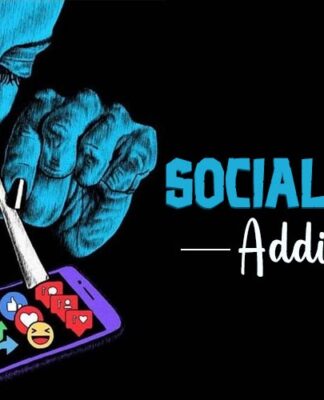
In today’s digital age, social media has become an inseparable part of our daily lives. It has evolved into more than just a tool for communication; for many, it feels like an addiction—a drug that people can’t live without. From the smallest towns to the largest cities, people worldwide are glued to their smartphones, tablets, and computers, feeding an insatiable appetite for likes, shares, comments, and followers.
The Global Phenomenon: Top Countries Leading Social Media Use
According to a 2023 report by DataReportal, over 4.9 billion people are active social media users globally, representing more than 60% of the world’s population. The countries leading this surge in social media use include:
- United Arab Emirates: 106% of the population (many users have more than one social media account)
- South Korea: 91%
- Taiwan: 89%
- Netherlands: 88%
- Saudi Arabia: 86%
- Malaysia: 85%
- United States: 83%
Countries like Brazil, India, Nigeria, and Indonesia are also rapidly increasing their social media footprints. With high engagement and mobile penetration, these nations are hotbeds of social media consumption.
The Positive Impact of Social Media
While social media is often criticized for its negative aspects, it also has several positive contributions that cannot be overlooked:
- Global Connectivity: Social media allows users to connect with friends and family worldwide. Platforms like Facebook, Instagram, and WhatsApp bridge the geographical gap, making it easy to stay in touch across distances.
- Information Access and Awareness: Social media has democratized access to information. Through X(Twitter), Facebook, and LinkedIn, users stay updated on world events, societal trends, and educational resources.
- Business and Economic Growth: Many entrepreneurs, influencers, and businesses have utilized social media to market their products, build brands, and reach global audiences. For instance, platforms like Instagram and TikTok have birthed new industries, empowering small business owners and creating job opportunities.
- Educational Tool: With platforms like YouTube, LinkedIn Learning, and others, social media has made education more accessible. Tutorials, webinars, and discussions enable users to learn new skills and advance their knowledge.

The Dark Side: Negative Effects of Social Media
Despite its benefits, social media can also act as a double-edged sword, leading to several negative outcomes, often comparing it to a drug that consumes time, focus, and emotional energy.
- Mental Health Issues: Constant comparison, fear of missing out (FOMO), and cyberbullying contribute to rising cases of depression, anxiety, and stress, particularly among younger users. According to the World Health Organization (WHO), global suicide rates have increased by 30% in people under the age of 25, with some studies linking the rise to social media’s harmful effects on self-esteem and mental health.
- Addiction and Time Consumption: Social media can become addictive, leading users to spend excessive hours scrolling through feeds, watching videos, and interacting with content. A 2023 study by Statista revealed that the average social media user spends 2 hours and 31 minutes per day on platforms. In countries like the Philippines, the figure rises to 4 hours and 15 minutes.
- Spread of Misinformation: Fake news and misinformation can spread like wildfire on platforms like Facebook and Twitter, causing public panic, political unrest, and confusion.
- Privacy Concerns: Users often unwittingly sacrifice their privacy, exposing personal details, location data, and habits that companies harvest for marketing or, worse, fall into the hands of hackers.
- Social Isolation: Ironically, while social media connects us online, it can lead to feelings of isolation offline. Many users experience a decline in meaningful, face-to-face interactions, becoming more invested in their online personas than real-life relationships.
The Solution: Striking a Balance
So, how can we address the problem without completely abandoning social media? Like any powerful tool, social media must be used responsibly. Here are some potential solutions:
- Education and Digital Literacy: Governments, educational institutions, and companies should prioritize digital literacy programs to help people understand the pros and cons of social media usage. Teaching responsible engagement, recognizing fake news, and balancing screen time are essential.
- Regulation and Accountability: Governments and social media companies should work together to establish stricter regulations regarding data privacy, misinformation, and mental health. Platforms should be held accountable for the harmful content and addictive algorithms they create.
- Social Media Detoxes: Personal awareness is key. Individuals should practice “social media detoxes,” taking breaks to reconnect with the physical world and reflect on their usage patterns. Mental health campaigns encouraging digital well-being are already gaining traction in countries like the United States, UK, and Australia.
Conclusion: The Drug We Can’t Quit
Like any powerful drug, social media has the capacity to heal or harm, depending on how it’s used. While it connects us to the world and offers countless opportunities, it also poses risks to our mental health, privacy, and societal well-being. Striking the right balance is key—by educating ourselves, promoting responsible use, and implementing policies that protect the public, we can harness social media’s potential while mitigating its dangers.
The world is more connected than ever, and social media is here to stay. Whether we let it rule us or learn to rule it will determine the future of our global society.

